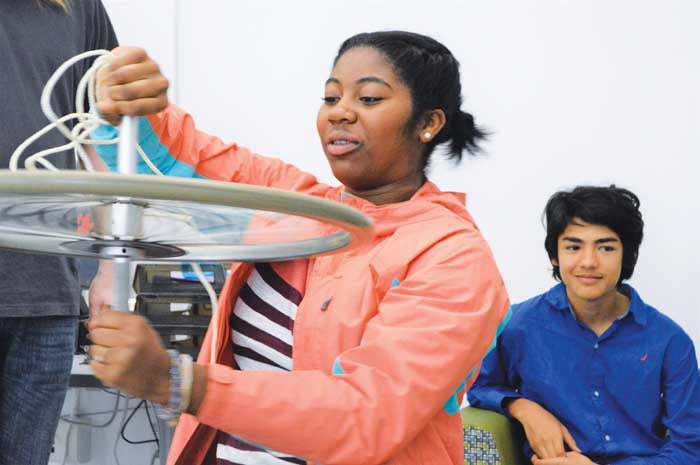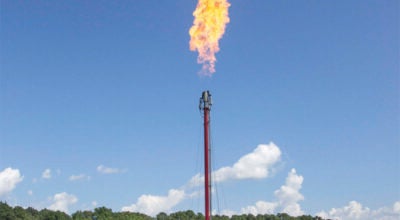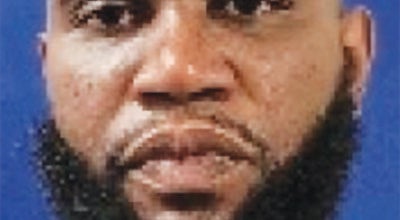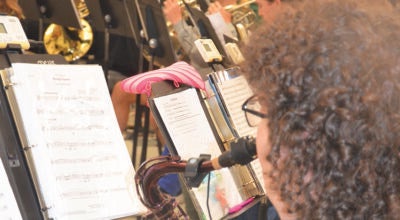STEM students study at UNC
Published 8:38 am Thursday, April 13, 2017

- Davie High STEM students Izoma Mua and Ulisses Navarro learn about motion and momentum at UNC.
By Lynn Wisecarver
Special to the Enterprise
Students from Davie High School’s STEM Center boarded a bus at 6:30 a.m. Friday, March 31 to travel to the University of North Carolina at Chapel Hill for a day of physics and to learn about STEM opportunities at the collegiate level as well as STEM careers.
Dr. Richard Blackmon, a 2002 graduate of Davie High School, worked with his former teacher, STEM English teacher Lynn Wisecarver, to develop activities that would appeal to sophomores and juniors interested in pursuing studies in one of the STEM fields.
“STEM is the great equalizer for gender, race, and economics,” Blackmon told the students. “I grew up in poverty, and I found that STEM provided many unique paths for finding a career. I started out at a community college before moving on to UNC-Charlotte for my undergraduate and doctoral studies.”
Blackmon, a post doctoral research assistant in the Coherence Imaging Lab in the physics and astronomy department at UNC-Chapel Hill, has a doctorate in optics and engineering.
In addition to maintaining a custom built optical coherence tomography (OCT) and spectrometer, he is also involved with developing a new method for quantitative imaging of diseased tissue for studying breast cancer and pulmonary disease using plasmonic nanoparticles.
Jessie Barrett and Kyle Slinker, physics doctoral candidates, assisted Blackmon on demonstrating wave length changes through the use of Ruben’s tube. This experiment with fire responds to sound frequency and oscillating pressure.
Blackmon connected his phone to the experiment to play music which would influence the height of the flames, but it initially did not work. After several attempts the music finally came through and made the experiment a success.
“Everything works well on paper, but then reality throws a monkey wrench into it and you just have to figure it out,” Blackmon said.
The 28 students broke into three groups to learn about optics, electromagnetism and momentum and motion. Blackmon urged each group to participate in the hands-on experiments, ask questions and think about how each one had practical applications.
“At the momentum station I learned the difference between momentum and motion. I always thought they were the same,” Ulises Navarro, freshman, said.
Students spent the next hour in a seminar with undergraduate researchers in a variety of STEM related fields. Blackmon reached out to the Women in Physics group to garner speakers for the research seminar.
Jenna Perry spoke about her research detailing the individual differences in emotional intensity. Aleks Czejdo explained the computational project he is involved with to modify the Athena code.
Quique Toloza led students through a brief lesson on the neuron and his work building multicompartmental models of neurons to investigate the neuronal response of external electric fields. He explained that this simulation method has been recently investigated in clinical applications for treatment of psychiatric illnesses.
Leno Smith showed the students how a special liquid handling robot could carry out time sensitive experiments involving bacteriophage.
Evan Lineberger used a volunteer, sophomore Mikhail Harris, to demonstrate how pulse wave velocity is measured. The practical application of this helps determine arterial stiffness.
Kara Segerstrom spoke about using Resonance Acoustic Spectrometry with Optical Vibrometry (RASOV) to determine clot elasticity through the use of a CEMport machine. The practical applications for this will help treat cardiovascular disease.
“After lunch I will give the same presentation I have just given to you, just in more detail, to some science people as I defend my honors thesis,” Segerstrom said.
At a pizza luncheon, the undergraduates answered questions about college life and choosing a major. They encouraged the high schoolers to not limit themselves to just one major and to constantly explore and develop connections with professionals in their fields of interest.
After lunch, Kenan Distinguished Professor Dr. Louise Dolan gave a brief lecture on the sub structure of matter of which her work is known worldwide. She explained the string theory using something that most STEM students have never seen – a blackboard and chalk.
“The point of talking to you about all of this is to illustrate the importance of experimental and theoretical work,” Dolan said.
The students spent the next hour touring three labs which focused on organic electronics (McNeil Lab), analysis and nanofabrication (CHANL lab) and imaging and lasers (Oldenberg lab).
“The Oldenberg lab was so cool. She showed us how fiber optics worked during an endoscopy,” Sarah Bracken, sophomore, said. “Then she showed us a fiber optic camera and demonstrated how it is used in surgery.”
The BeAM Makerspace lab featured items that had been produced using 3-D printers. Evan Brumbaugh tried on the electric hand and mentioned that he was working on creating a similar device for his high school chemistry class.
No trip to Carolina is complete without a stroll around campus, so in keeping with getting the full college experience, students toured the Student Union, Coker Arboretum, Wilson Library and the Old Well before heading out to Franklin Street.
“This is my dream school, and after being here today it just makes me want to come here that much more,” Erin Cartner, junior, said.




